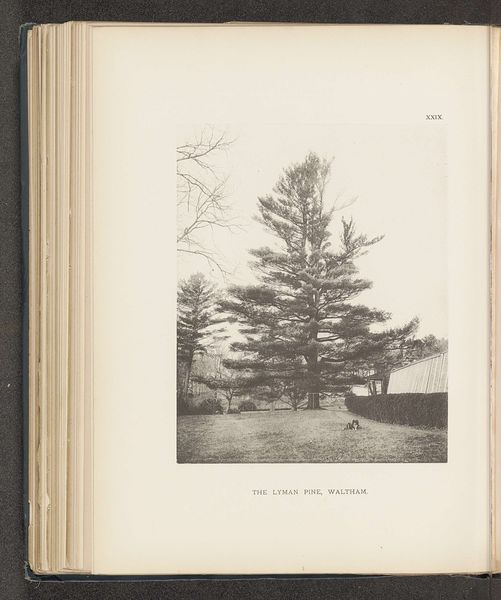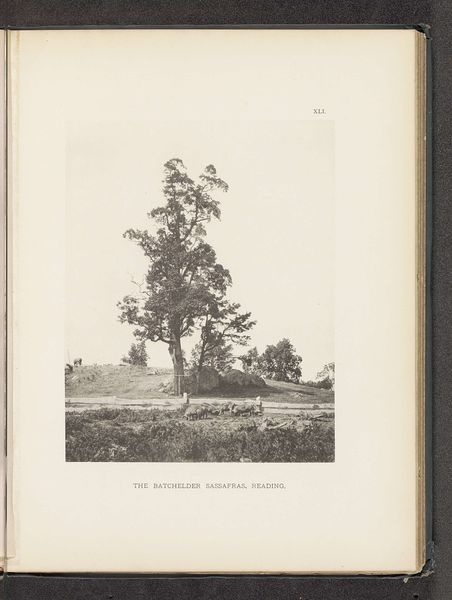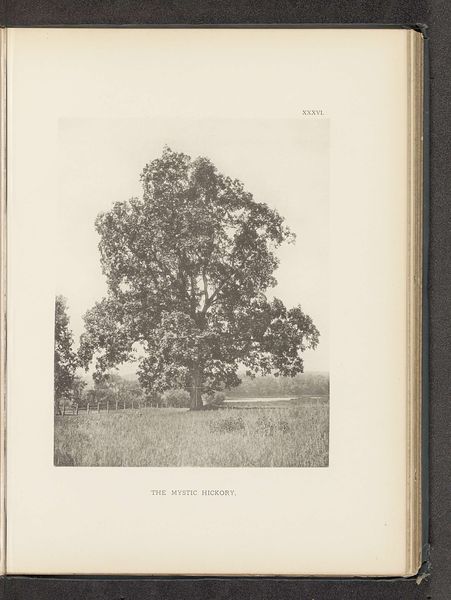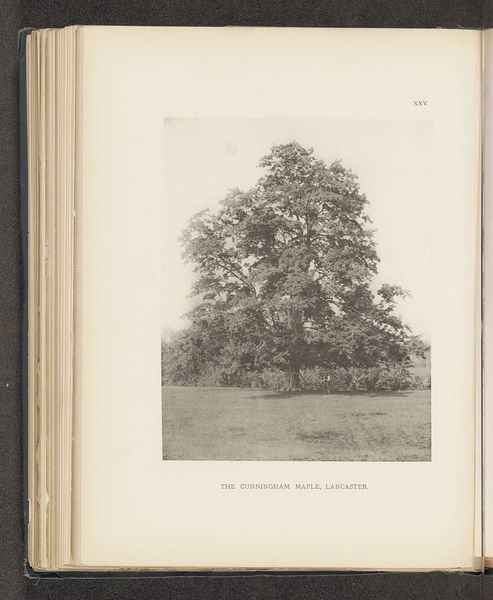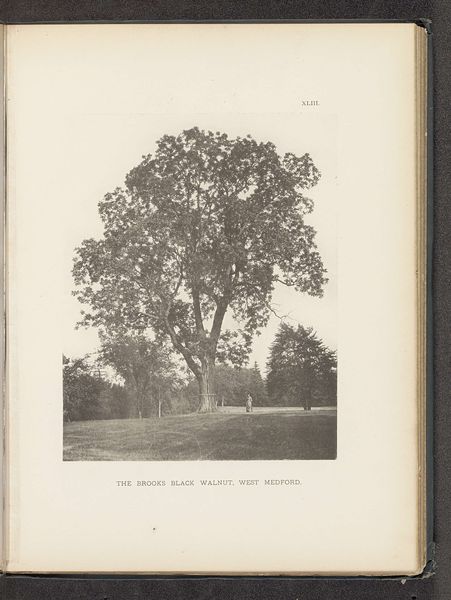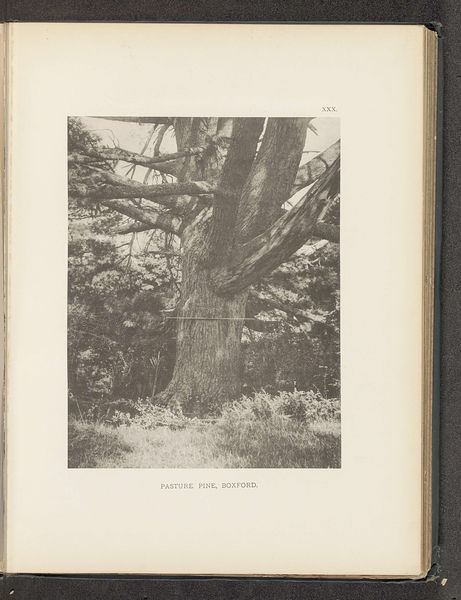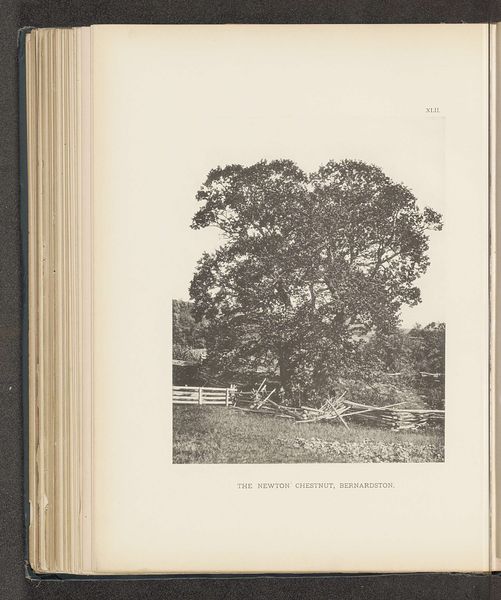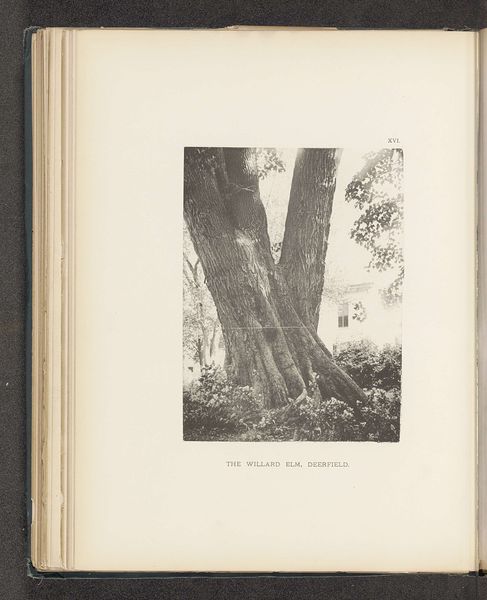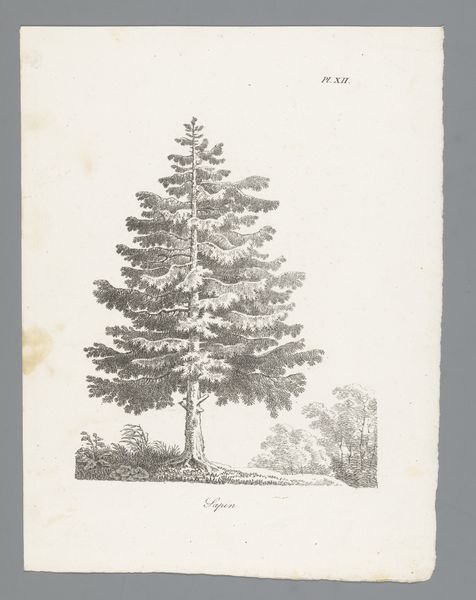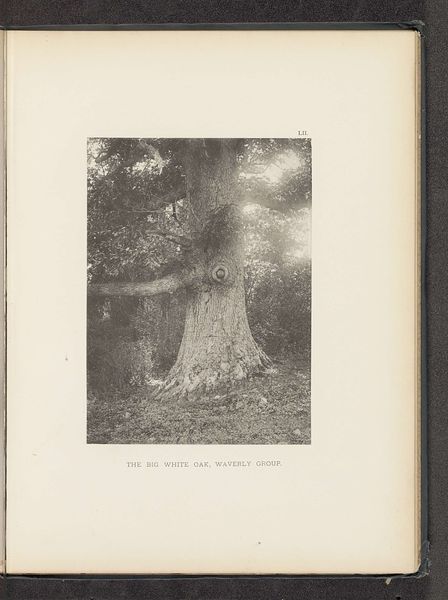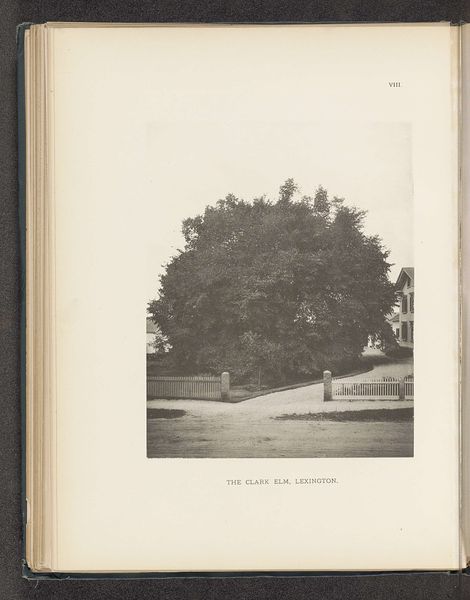
photography
#
aged paper
#
homemade paper
#
pictorialism
#
sketch book
#
hand drawn type
#
landscape
#
personal journal design
#
photography
#
personal sketchbook
#
thick font
#
sketchbook drawing
#
paper medium
#
sketchbook art
#
realism
Dimensions: height 220 mm, width 175 mm
Copyright: Rijks Museum: Open Domain
Curator: Here we have a fascinating photograph, simply titled "The Batchelder Pine, North Reading," dating from before 1890, credited to Henry Brooks. Editor: My first impression? Stripped bare, literally. See how many branches have fallen away, leaving this almost skeletal silhouette? It's austere. Curator: Precisely. What Brooks captures is more than just a tree. Look at how it's presented within a personal journal—a book—not meant for public display initially. It raises questions about access and viewership, shifting ideas of photographic authority. The landscape photograph, reframed as personal reflection. Editor: Note also the tangible aspects of production; the aged, homemade paper lends an incredible material presence. Brooks emphasizes process through photography, yes, but it also calls attention to what this physical object would have felt like, engaging with this photograph is itself tactile in a way. I can imagine him carefully crafting this album, thinking through each choice of paper and placement. Curator: The “personal sketchbook” context also affects how we should approach this piece of art. In this way, Brooks’ artistic expression engages the audience to consider that “photography” might mean. Rather than art made for elite patrons or museum viewers, this landscape seems intent on cultivating a more intimate audience. Editor: Intimate, yes, but there’s still the labour inherent in its creation. Photography might feel 'immediate' but someone had to craft this photograph and present it using "hand drawn type" too. Someone chose that heavy font specifically. Curator: You’re right. What this album format gives us, I think, is the sense of photography as a tool for processing personal experience rather than creating monumental and idealized scenery as a pure artistic vision, intended to gain recognition within a restricted artistic environment. It reframes landscape. Editor: It pushes back against the perceived objectivity of photography by literally grounding it within the act of physical making. From image to the actual sketchbook the tree feels documented yet transformed through both its natural material existence and photographic intervention. A study in process, in layering time and making. Curator: Indeed. Looking at this artwork reshapes the narrative of what photographs can offer within social discourse during the era of American pictorialism, while we still consider photography through personal historical exploration. Editor: A remarkable piece when we allow our interpretation to come to light through light and shadow cast by a fallen tree.
Comments
No comments
Be the first to comment and join the conversation on the ultimate creative platform.
